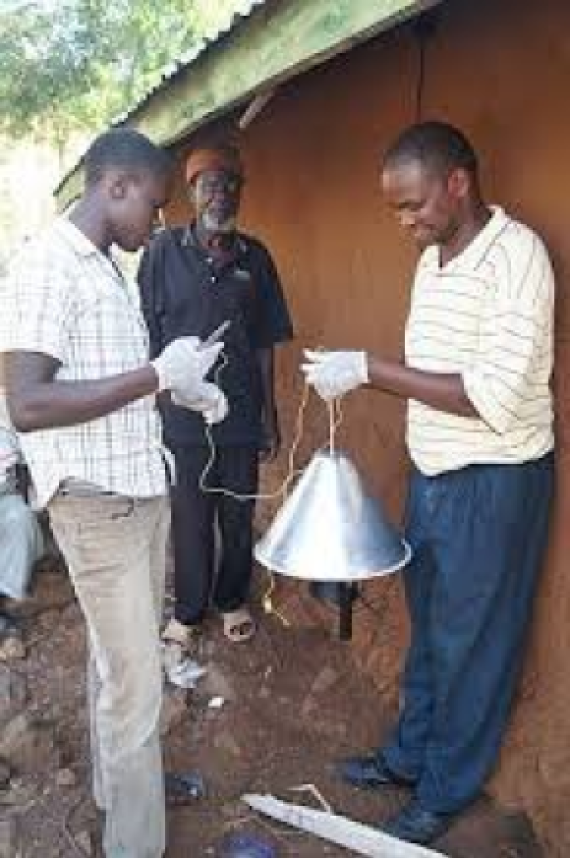The significance of this is that these mosquitoes can provide important information. The quality of the odour traps used to catch malaria has been improved in the past few years. Wageningen entomologists have been using a well-functioning odour trap containing the MB5 blend to keep mosquitoes out of the house in the large-scale malaria project on the Kenyan ‘malaria island’ of Rusinga. But this odour trap only catches hungry mosquitoes and not those that have just had a good feed of blood.
Entomologist Niels Verhulst is now working on an odour trap which can catch those blood-sated mosquitoes. This mixture contains carbon dioxide which is produced in a new way. Up to now, the CO2 has been made by fermenting sugar with yeast. In the new approach, molasses is fermented instead. Molasses is not only cheaper than sugar but also turns out to contain substances which are highly attractive to the Anopheles mosquito, as the researchers report in the Malaria Journal. Verhulst has not yet identified these substances, but this synthetic odour blend is clearly even more attractive to the mosquito than our own smell.
A big advantage of this new odour blend is that you can catch mosquitoes which have already fed and can use the blood samples to find out whether the different malaria mosquitoes consume blood from humans or livestock. ‘This can be of enormous help to research on the spreading of malaria outside the home,’ says Verhulst. Combatting malaria outside the home is increasingly important in Africa, now that the battle against the disease within the home has met with considerable success. The use of impregnated bed nets has halved the number of deaths from malaria since 2000. But to really eradicate malaria the mosquitoes must be fought outside the home too.
In this regard, most of the attention goes to the most notorious mosquito, the Anopheles gambiae. ‘We catch specific mosquitoes and still do not know much about other mosquitoes which spread malaria,’ says Verhulst. It is thought that there are 30 to 40 species of mosquito which can carry malaria. He is studying which mosquitoes transmit malaria from great apes to humans. To do this he is currently collecting skin bacteria and odours from chimpanzees in Dutch zoos and in the Congo, in order to find out whether the Anopheles mosquitoes in the Wageningen research lab are attracted to their odour profile. His ultimate goal is to find an odour blend that will catch the malaria mosquitoes which bite both people and great apes.

